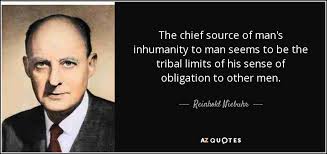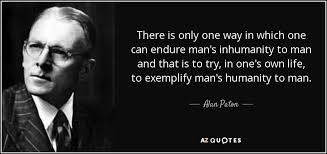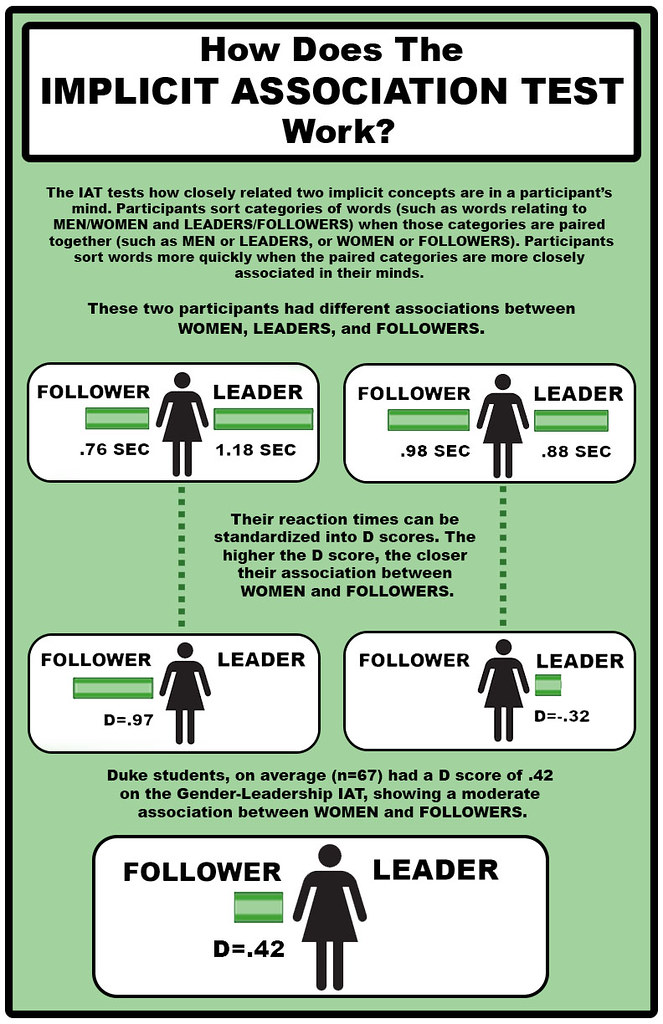 A few years ago, I had the unfortunate privilege of having for a manager a homosexual person. Let me emphasize; I do not care about your personal choices and lifestyle; keep it to yourself and out of the workspace. Hetero- or homosexual, does not matter; it does not belong in the workplace! Back to the manager, as he was openly homosexual, he embraced all the biases claptrap and accused me of being racist and homophobic.
A few years ago, I had the unfortunate privilege of having for a manager a homosexual person. Let me emphasize; I do not care about your personal choices and lifestyle; keep it to yourself and out of the workspace. Hetero- or homosexual, does not matter; it does not belong in the workplace! Back to the manager, as he was openly homosexual, he embraced all the biases claptrap and accused me of being racist and homophobic.
Of which, I am neither. When informed that I am neither homophobic nor racist, sexist, genderist, etc., I was told he was observing my unconscious biases and claiming that I was not biased was actually declaring I was heavily biased. He then went so far as to write me up for being biased. At the time, I had not studied the research on biases and could not counter his charges. This manager chose to stand inside personal space for the guys on his team, but not the females, which was sexual harassment, but the business refused to think this was sexual harassment. That this manager continually rubbed himself against the guys on his team was also rejected as sexual harassment.
I have learned much since this incident, and I want to help those in similar situations understand a few pieces of the language plasticity that goes into the bias arguments. I will be clear that if a heterosexual male rubs against a female, which is considered sexual harassment, then the same is true for a homosexual, regardless of gender. Being uncomfortable with being touched is not an indication of bias, simply an expression of a personal preference.
Unconscious Bias
 Bog-standard bias is considered as attitudes, behaviors, and actions that are prejudiced in favor or opposition to a person, group, or thing. But, here is the clincher, bias is judged by others as a projection of themselves when they encounter other people, places, or things. If you think you have a handle on the language of biases, an unconscious bias is also called an implicit bias. Implicit bias is described as bias that occurs automatically and unintentionally, that nevertheless affects judgments, decisions, and behaviors, however just to keep you in the dark, implicit biases are also stereotypes. In social identity theory, an implicit bias or implicit stereotype is the pre-reflective attribution of particular qualities by an individual to a social out-group member. Implicit stereotypes are shaped by experience and learned associations between certain qualities and social categories, including race or gender.
Bog-standard bias is considered as attitudes, behaviors, and actions that are prejudiced in favor or opposition to a person, group, or thing. But, here is the clincher, bias is judged by others as a projection of themselves when they encounter other people, places, or things. If you think you have a handle on the language of biases, an unconscious bias is also called an implicit bias. Implicit bias is described as bias that occurs automatically and unintentionally, that nevertheless affects judgments, decisions, and behaviors, however just to keep you in the dark, implicit biases are also stereotypes. In social identity theory, an implicit bias or implicit stereotype is the pre-reflective attribution of particular qualities by an individual to a social out-group member. Implicit stereotypes are shaped by experience and learned associations between certain qualities and social categories, including race or gender.
Now, if you think you finally have a grasp on biases, stereotypes, and preferences, we add the final straw to the argument. Biases and stereotypes are judged by an observer using their understanding, education, experience, and opinions as a projection upon you and your actions, behaviors, and attitudes as a lens to understand the world around them. Thus, my not saying “Good Morning” to my manager was projecting his own biased thinking and homophobia, declaring my actions are homophobic slurs. In reality, I am not a morning person and generally do not talk to anyone, spouse included, before 0800. Walking in at 0400 to begin a shift in a call center meant my cherub-like demeanor had not woken up yet, and silence was the only policy.
Bias Self-Auditing
In my email box, I have an email that includes a self-audit of bias for managers. Before continuing, consider what you know about bias. Bias is the thoughts, feelings, ideas, and visions of another person, project upon you and your actions, attitudes, and behaviors, so the person projecting can understand the world. I cleaned up the obvious grammatical errors, not that this improved the material very much.
How and to whom do you delegate work?
-
-
-
-
-
- By giving specific tasks to one team member, am I depriving another team member of a growth opportunity?
- Am I giving the same level of detail, and therefore equally setting each team member up for success when I assign projects?
-
-
-
-
End goal: Ensuring that everyone has an equal chance to take on challenging and meaningful projects
How do you give feedback to different direct reports?
-
-
-
-
-
- Am I delivering feedback casually to some team members and formally to others?
- Do I soften critiques for some team members more than others?
-
-
-
-
End goal: Making sure you’re delivering feedback equitably.
Any generalizations you make about team members.
-
-
-
-
-
- What kind of assumptions am I making about team members based on age, ethnic background, race, gender, sexual orientation, religion, appearance, or anything else?
- Do my assumptions impact how I feel about their capability and competency?
-
-
-
-
End goal: Minimizing the perpetuation of stereotypes while practicing and displaying empathy.
Who do you praise publicly, and who do not praise publicly?
-
-
-
-
-
- Is there a personal motivation behind team members I praise publicly and those for whom I withhold praise?
- Do I limit the exposure of my compliments for some team members and show my appreciation more widely for others?
-
-
-
-
End goal: Ensuring that you’re sharing accolades fairly.
How and with whom do you exchange casual banter?
-
-
-
-
-
- Do I have friendly conversations or share memes with some teammates more than others? How might that affect workplace alliances?
- Do some teammates feel alienated or marginalized by witnessing my apparent affinity for other teammates?
-
-
-
-
End goal: Avoiding outsized allegiances with people based on your shared perspective to the detriment of developing relationships with others with different viewpoints.
Who do you go to for advice?
-
-
-
-
-
- Do I go to the same people time and time again for mentorship? Do they look like me?
- Are there people to whom I could go for advice and a more expansive perspective?
-
-
-
-
End goal: Avoid making decisions based only on the feedback shared in an echo chamber.
Consider these statements with me for a moment as part of a discussion on biases. Feel free to leave your comments in the space provided below this article. When I need advice, my manager is younger than I am, but has years of experience in the company. His boss is older than I am by a little bit. They both look like me. Does this automatically mean that I must sacrifice talents, skills, abilities, and tenure because the information comes from someone who looks like I do? No, logic screams. But the emotional immaturity of those casting biased aspersion will claim yes.
When I first arrived on my ship USS Barry (DDG 52), my second-class petty officers were two white males, one black male, and one black female. For competence, I went to the black female as she displayed the most leadership—the two white males were involved in their own relationships and were rarely available to answer questions. The black male did not possess the maturity to answer questions. The first-class petty officers were three white males, two of whom embodied immaturity, and our chief… well, let’s not speak ill of the dead. If I acted as these bias audits claim, my Navy career would have been disastrous, for I would have rejected competency and maturity for race, gender, and incompetence.
Suggestions, Ideas, and Thoughts
Stop seeing race, gender, nationality, and other lines of separation. These are distractions cast upon everyone by foul oppressors who see these lines of separation and project their inadequacies upon everyone else. It is perfectly acceptable not to have biases and claim you have no preferences. I do not care about your gender, race, color, creed, religion, handicap status, or anything else. I care only about your competency, and if I can help you, or you can help me increase competency, let’s work together!
Believe that you are a good person! I know those projecting their inadequacies and claiming you have biases are profoundly pernicious in their approaches. But, when you have confidence that you are doing the best you can, you can rest easy when these pernicious oppressors begin to attempt to humiliate you. In the movie “The Sound of Music,” there is a song called “I Have Confidence.” When you need reminding of your goodness, play this song, and sing along at the top of your lungs! I promise you will feel better!
When you treat everyone as you desire to be treated, without fear and with confidence, you will always have loyal people at your back to support you. If you live by implicit bias and fear, the whole world will never trust you, and you will not have confidence in yourself. Those who oppress want you miserable; deny them that opportunity!
Living without biases is possible, is easy, but is sometimes not very convenient. But, as Mr. Miagi said in the original “Karate Kid,” “Man who walks in street, gets squished like grape.” Dr. Seuss is right, “Be the best you, you can be.” Stop allowing the oppressors into your mind; they are not worth your time.
© 2021 M. Dave Salisbury
All Rights Reserved
The images used herein were obtained in the public domain; this author holds no copyright to the images displayed.


 I find a piece of fiction masquerading as science from today’s email, and I cannot help but ask myself, when did fiction become a reality? How did Orwell’s 1984 escape the pages and become a reality? Why did Animal House exit the big screen and become a way of life? Mark Twain is one of the most often quoted authors, and I particularly like his comments on statistics which is pertinent to today’s discussion on fiction.
I find a piece of fiction masquerading as science from today’s email, and I cannot help but ask myself, when did fiction become a reality? How did Orwell’s 1984 escape the pages and become a reality? Why did Animal House exit the big screen and become a way of life? Mark Twain is one of the most often quoted authors, and I particularly like his comments on statistics which is pertinent to today’s discussion on fiction.





 I cannot stress enough the need for every person to stop accepting the box others claim you must live in to “get along and get ahead.” You are an individual with inalienable rights, a brilliant mind, and unlimited potential. You are needed on the front lines of the battlefields of today. You must play an active role, or you will not be able to leave the American Heritage and this great Republic to your children and community.
I cannot stress enough the need for every person to stop accepting the box others claim you must live in to “get along and get ahead.” You are an individual with inalienable rights, a brilliant mind, and unlimited potential. You are needed on the front lines of the battlefields of today. You must play an active role, or you will not be able to leave the American Heritage and this great Republic to your children and community.